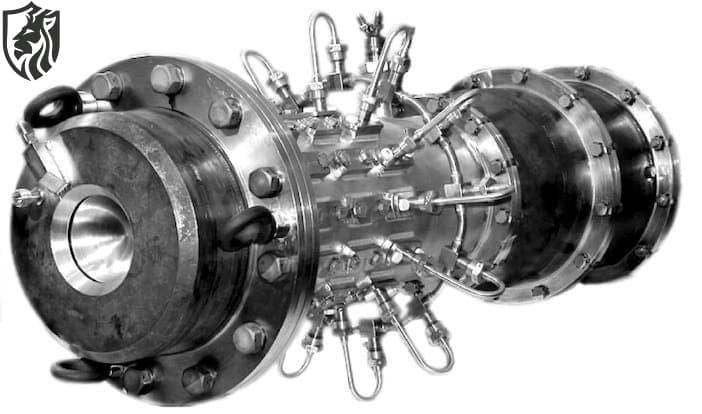
Rostec Pulse Detonation Engine
With the development of a groundbreaking pulse detonation engine (PDE), China has significantly advanced its space technologies. Unlike traditional rocket engines that rely on continuous combustion, this novel propulsion method operates in bursts, offering a marked improvement in both efficiency and speed.
Moreover, the detonation-based cycle enables better fuel utilization, potentially reducing costs and increasing performance. As a result, China’s investment in PDEs not only demonstrates its commitment to cutting-edge aerospace innovation but also positions it as a serious contender in the next era of space propulsion.
With this technology, which will conceivably transform space travel and hypersonic flight, China is currently leading the way in next-generation propulsion systems.
Technology of Pulse Detonation Engine
Whereas conventional engines run continuously, a pulse detonation engine is built on the idea of creating precisely timed explosions at regular intervals. With far more thrust using less fuel, these explosions create enormous shock waves that move rockets or aircraft.

Detonation waves, which transfer more energy than traditional combustion and move faster than the speed of sound, are the key component of this method. Ideal for spaceflight and hypersonic flight, the outcome is a system able to move at faster velocities and with higher fuel efficiency.
Benefits of pulse detonation technology
The evolution of pulse detonation engines (PDEs) offers several benefits compared to traditional propellant systems:
1. Improved mileage on Gas
PDEs have as one of their main benefits stronger thrust at the expense of less fuel. While a PDE bursts the fuel in pulses, producing more effective energy conversion, conventional engines run continuously. This suggests that without using more fuel, rockets and aircraft can cover bigger distances.
2. Faster Velocity
PDEs would have the potential to go hypersonic thanks to the shockwave-based propulsion system, drastically cutting trip time. Mach 5+ hypersonic speeds would allow spacecraft to reach orbit faster, therefore reducing lift-off costs and increasing the economy of space travel.
3. Reduce Running Costs
Reduced running expenses follow a lower fuel consumption. Furthermore, PDEs boast a simpler mechanical design than conventional turbine engines, which reduces manufacturing and maintenance expenses.
4. Multifarious Application in Space
PDEs can transform air travel even though they are being researched mostly for use in rocket propulsion. Long-distance flights would be an hour or two instead of days, and hypersonic passenger aircraft driven by PDEs would cut travel durations across continents by many orders of magnitude.
Chinese Space Aspirations and PDE Development
China has been steadily funding next-generation propulsion technologies to increase its space capability. The development of PDE is part of a larger Chinese strategy to create next-generation space and defense capabilities that include enhanced rocket propulsion, reusability in space vehicles, and hypersonic missiles.
Consequences for Space Discovery
PDEs would enable China to greatly raise the effectiveness of her space operations. Faster, more efficient rockets would reduce the cost of space cargo placement. Achieving lunar bases, Mars missions, and deep-space exploration projects would all be less expensive this way.
Furthermore, PDE-propelled spacecraft can be used to boost payload capacity, thereby enabling larger scientific payloads, satellites, and piloted trips to orbits outside Earth.
Military Uses for Hypersonic Weapons
Apart from civilian applications of rocket propulsion, China’s PDE technology has significant military connotations. Increased propulsion allows hypersonic capabilities to construct future-generation hypersonic cruise missiles and faster-flying reconnaissance aircraft.
Through the DF-ZF hypersonic glide vehicle, China has previously demonstrated its hypersonic capability. PDEs’ applications on military platforms help increase their strategic capability even more.
Worldwide Competition and Influence
The development of PDE technologies in China puts it first among all the aircraft innovations worldwide. However, other nations such as the United States, Russia, and the European Union are also researching similar propulsion technologies. Countries are fighting to create more effective engines with higher speed, efficiency, and stealth, so the hypersonic race is getting more intense.

Should China effectively apply PDEs on present spacecraft and hypersonic planes, it will have a significant advantage in space exploration and defense technologies. This could lead to greater global competitiveness and potentially new space treaties or laws regulating the use of hypersonic technologies.
Obstacles and Future Routes
PDE technology presents various engineering and execution difficulties even if its potential benefits are outstanding:
- High-tech materials and cooling systems help to control the enormous heat produced by multiple detonations, therefore preventing engine ruin.
- The development of stronger materials is necessary for structural durability, as pressure waves have the potential to rapidly wear down engine components.
- Extended flight and thrust control depend on proper timing from which to manage detonation rate and stability.
China’s Following Actions
China’s effective PDE development marks only the beginning. Engineers will have to keep developing the technology, test it extensively in flight, and apply PDEs on spacecraft and hypersonic aircraft if they are to reach complete operational capability.
Future applications might involve China deploying low-cost, reusable spaceplanes and PDE-powered spacecraft to carry satellites and perhaps interplanetary flight. Such engines could fundamentally alter human exploration of the planet and travel throughout the universe depending on optimization and scaling.
Finally
China’s success with pulse detonation engines represents a significant achievement in aeronautical engineering. PDEs are a groundbreaking technique in space and the military since they allow one to capture the energy of detonation, therefore improving efficiency, speed, and running cost.
The globe will be closely observing as China keeps stretching the boundaries of next-generation propulsion advances. Whether it allows quicker space flights, passenger air travel at hypersonic speeds, or game-changing military usage, the impact of PDEs will surely shape the aerospace future for the next decades.
References
- South China Morning Post—China’s Hypersonic Advancements and PDE Research
- Global Times—China’s Breakthrough in Pulse Detonation Engine Technology
- NASA – Pulse Detonation Engine Research and Potential Applications
- The Diplomat—China’s Military Use of PDE in Hypersonic Missiles
- Defense News—Global Competition in Hypersonic and PDE Technologies






